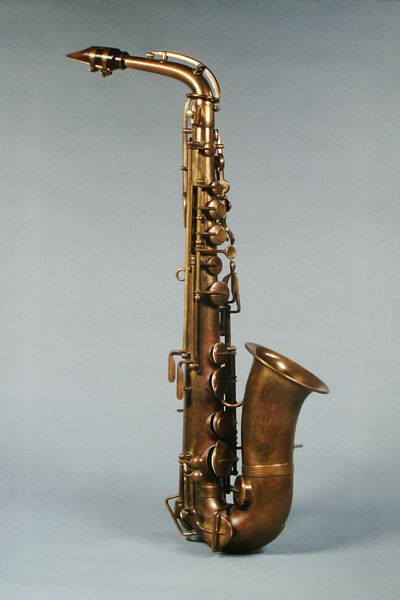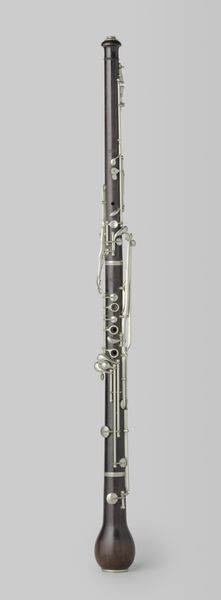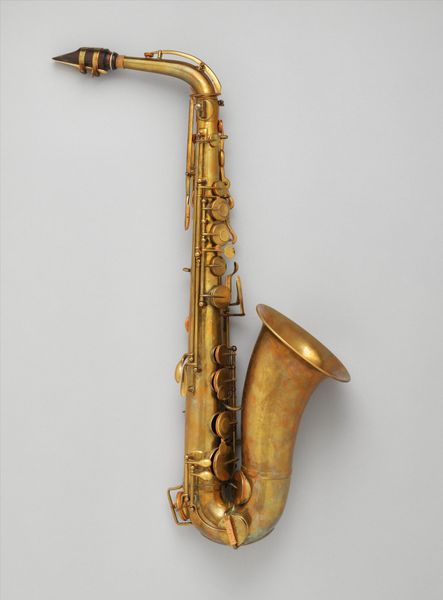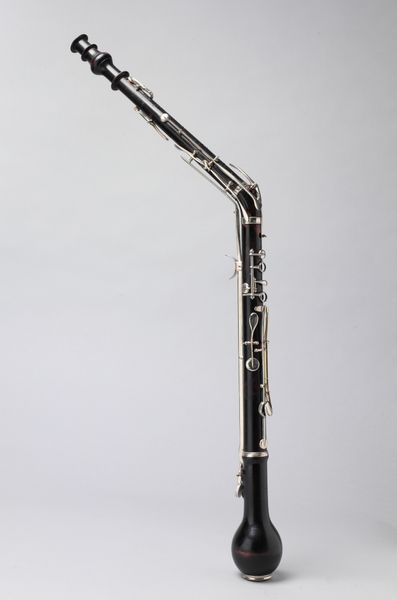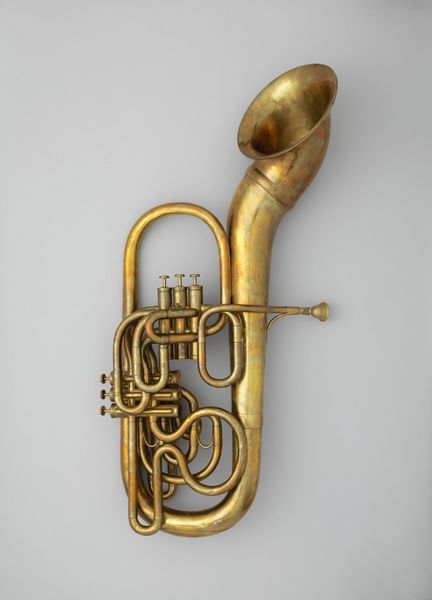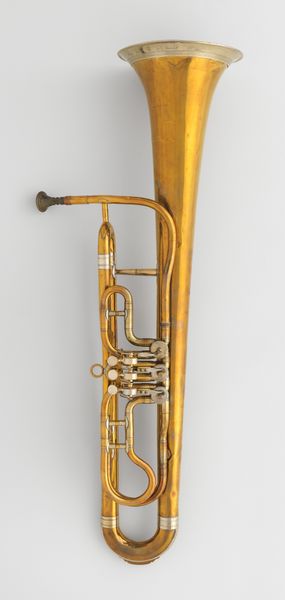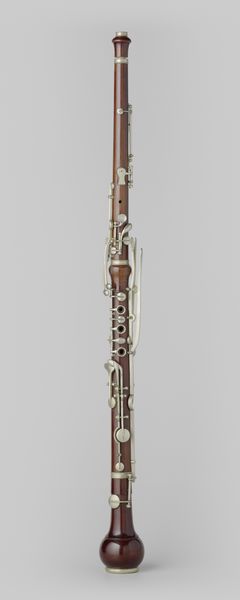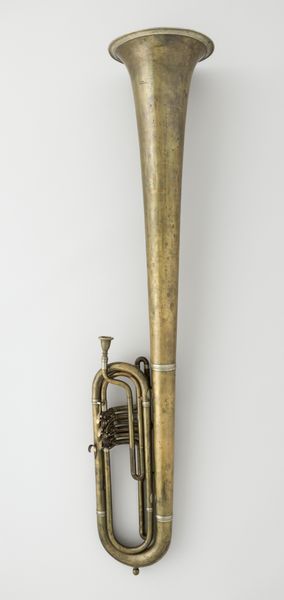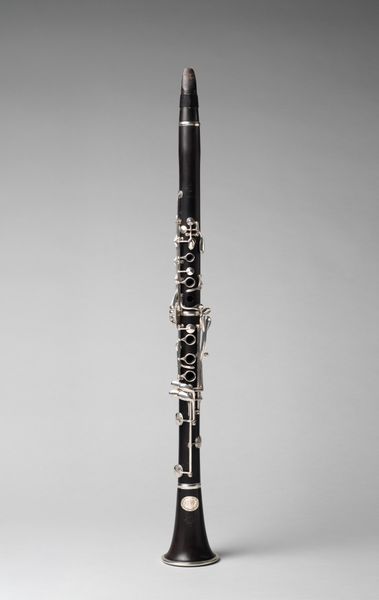
photography
#
sculpture
#
photography
#
musical-instrument
Dimensions: Length (bell to bend at base): 853 mm. Diameter of bell: 157 mm. Length of tube (approx.) 1925 mm. Mouthpiece: 92 mm. Crook (approx.) 300 mm. Tube length left side of tube (bell end to bottom of bend): ca. 660 mm. right side of tube: 650 mm. Bell: 210 mm.
Copyright: Public Domain
Editor: Here we have a photograph of Franz Losschmidt’s “Clariofon Bass Clarinet in B-flat,” dating from between 1850 and 1899. What strikes me is the sheer mechanical complexity, all those keys and rods, hinting at the labor required to produce it, and the skilled labor required to play it. What’s your take on this piece? Curator: What’s interesting is to consider the industrial processes involved in the production of such an instrument. The creation of the brass, the precision tooling to create the keys and the bore of the instrument, it speaks to a larger network of industries and labor. Do you see any class implications? Editor: Well, clarinets were originally intended as affordable alternatives to more complex woodwinds like the oboe. Was this accessible to most people, though? Curator: Perhaps not directly, but consider the social impact: cheaper instruments fueled the rise of popular music and brass bands, transforming leisure and entertainment for the working class. Mass production changed art creation and music accessibility, impacting our definition of art itself. We might also ask about the labour involved in playing the instrument. Editor: True, musical skill itself becomes a form of specialized labor. Curator: Precisely! This instrument is not merely an object of aesthetic contemplation but a nexus point of material production, skilled craft, and the evolution of musical culture driven by technological advancements and availability. Editor: This conversation opened my mind to the interconnected web that supports art creation. I mean, there's more to it than the surface. It includes labor, materials, accessibility, social, and economic contexts, all wrapped together. Curator: And hopefully a deeper appreciation for what we're looking at when we view an object like this.
Comments
No comments
Be the first to comment and join the conversation on the ultimate creative platform.

